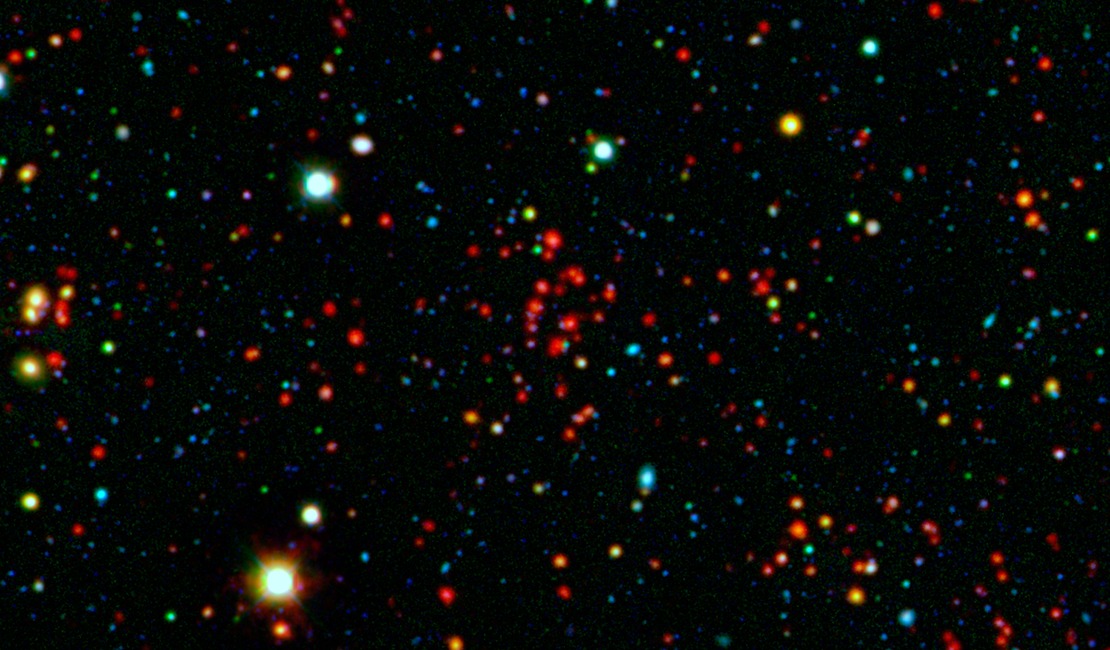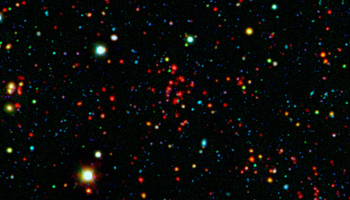
Galactic Metropolis
The collection of red dots seen near the center of this image show one of several very distant galaxy clusters discovered by combining ground-based optical data from the National Optical Astronomy Observatory's Kitt Peak National Observatory with infrared data from NASA's Spitzer Space Telescope. This galaxy cluster, named ISCS J1434.7+3519, is located about 9 billion light-years from Earth.
The large white and yellow dots in this picture are stars in our galaxy, while the rest of the smaller dots are distant galaxies. The cluster, comprised of red dots near the center, includes more than 100 massive galaxies.
Spitzer was able to capture prodigious levels of star formation occurring in the galaxies that live in this cluster. Some of them are forming stars hundreds of times faster than our own Milky Way galaxy.
Infrared light in this image has been colored red; and visible light, blue and green.
Image Details
- Date
- December 18, 2013
- ID
- nhsc2013-023a
- Type
- Observation
- Credit
- NASA/JPL-Caltech/M. Brodwin (UMKC)
Object Details
- Name
- ISCS J1434.7+3519
- Subject | Distant Universe
- Galaxy Grouping Cluster
- Distance
- Lightyears 9,000,000
- Redshift 1.374
- Constellation
- Bootes
Downloads
Color Mapping
| Telescope | Spectral Band | Color Assigment | Wavelength |
|---|---|---|---|
| Spitzer (IRAC) | Infrared (Near-IR) | Red | 3.6 µm |
| Spitzer (IRAC) | Infrared (Near-IR) | Yellow | 4.5 µm |
| KPNO-4m (Mosaic-I) | Optical (Bw band) | Green | 400.0 nm |
| KPNO-4m (Mosaic-I) | Optical (I band) | Blue | 800.0 nm |








